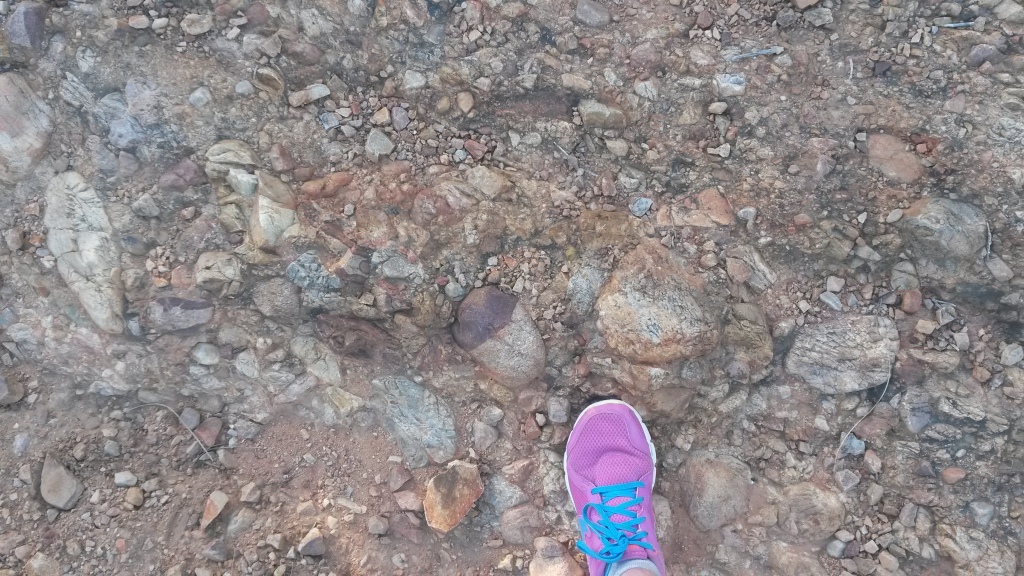 |
| An artist’s vision of Sauropods and Iguanodons during the late Jurassic. Image taken from Wikipedia Commons here. |
def. Jurassic:
1. A geologic period spanning from approximately 200 to 145 million years ago.
2. A cool adjective to use in everyday life to describe something or someone ancient and/or gargantuan. For example, “My Jurassic professor doesn’t even know how to use a computer. He does all of his lectures in chalk on the blackboard!” and, “Wow, this is a Jurassic portion of french fries! Please help me eat these.”
3. A time period when the following dinosaurs were NOT alive: T-Rex,Velociraptors, and Triceratops, the dinosaur stars of the movie “Jurassic Park.” Dinosaurs that WERE alive during the Jurassic period include Sauropods such as Apatosaurus and Brachiosaurus, Theropods such as Allosaurus and Megalosaurus, and –one of my favorite dinosaurs–Iguanodons.
 |
| Jurassic Park movie poster. Image taken from Wikipedia. |
|
The movie “Jurassic Park” came out when I was nine years old. For many years, I would visit my grandmother in South Carolina for two weeks during the summer. My grandmother would spoil me during those two weeks. She would take me horseback riding, buy me toys and junk food, and take me to swim in her neighbor’s pool. She would also sometimes take me to see movies that my parents thought were “too scary” for me. The summer I was nine, my grandmother took me to see “Jurassic Park.” I was so scared that I had trouble sleeping for several nights. In the night I would hear scratching noises (probably my grandmother’s dogs), and I would imagine there were Velociraptors circling my bedroom window. The Velociraptor kitchen scene still spooks me as an adult.
You can watch a video clip of the Velociraptor kitchen scene here.
As a kid the movie “Jurassic Park” scared me to death, but I absolutely loved that movie. I asked for “Jurassic Park” plastic dinosaurs for Christmas, and I used my allowance to buy “Jurassic Park” trading cards. I collected the full set of cards, which are somewhere in my parents’ attic and probably worth a small fortune on ebay. Or maybe not. I imagine dinosaur cards don’t hold quite the same value as baseball cards.
As a young girl interested in science, I was particularly drawn to the female characters in “Jurassic Park”: Dr. Ellie Sattler and young computer whiz Lex. These two females are smart, athletic, and able to keep up with the boys– and more– in the movie. And, of course, they are very pretty in a windswept scientist sort of way. One of my favorite scenes in the movie is when Dr. Sattler sticks her hands in a big pile of Triceratops dung. I thought to myself, as a 9 year old, that I wanted to that kind of a scientist when I grew up– the kind that sticks her hands deep in the Triceratops poop.
Although I am not a paleontologist or even a biologist, I hope that I have become the kind of female scientist who “sticks her hands in the Triceratops poop.” That is, a confident female scientist who is not afraid of a little (or a lot) of dirt.
 |
| Dr. Ellie Sattler and the sick Triceratops. Image taken from here. |
You can watch the Triceratops poop clip here. The giant Triceratops poop pile is towards the end of the clip.
Alas, as I became older I realized that the movie “Jurassic Park” is riddled with scientific mistakes– and not just the whole crazy premise that dinosaurs can be made from ancient mosquitoes preserved in amber. The Michael Crichton book is somewhat more accurate but still has mistakes. I won’t go into all of the mistakes here, but you can read about the movie’s many inaccuracies here and here.
I’ll just go into a few of the “Jurassic Park” inaccuracies here. One of the inaccuracies is, sadly, that the pile of triceratops poop is far too large. Based on coprolites, dinosaur poop was likely smaller than the giant piles portrayed in the movie. So, I guess if I’m ever stuck on a crazy dinosaur theme park island and have to figure out why a dinosaur is sick, I won’t have to stick my hands in quite such a large poop pile. Also, Velociraptors were smaller than portrayed in the movie and were feathered. T-Rex probably could see you, even if you stayed perfectly still. Dilophosaurus (the poisonous spitting dinosaur) was larger and probably did not have a cool frill. There is also no evidence that Dilophosaurus had any sort of poison spit.
 |
| The less-scary but more realistic feathered Velociraptor. Image taken from Wikipedia Commons here. |
Despite now knowing the inaccuracies of the frill and the poison spit, I still really like the Dilophosaurus toy I had as a child. I used to make him (her?) spit at my younger sister when she tried to enter my room or when she was annoying me. Sorry about that, sis. By the way, this toy makes a delightfully horrible screeching sound when you move the Dilophosaurus’s front arm.
 |
| Dilophosaurus toy, like the one I had as a kid. Image taken from here. |
 |
| Dilophosaurus in Jurassic Park. Image taken from here. |
The biggest mistake in the movie and book? The name of the park. Many of the dinosaurs portrayed in the movie were not alive during the Jurassic period at all. T-Rex, Velociraptors and Triceratops, for instance, all lived during the later Cretaceous period. So, the park should probably have been named “Cretaceous Park” not “Jurassic Park.”
























